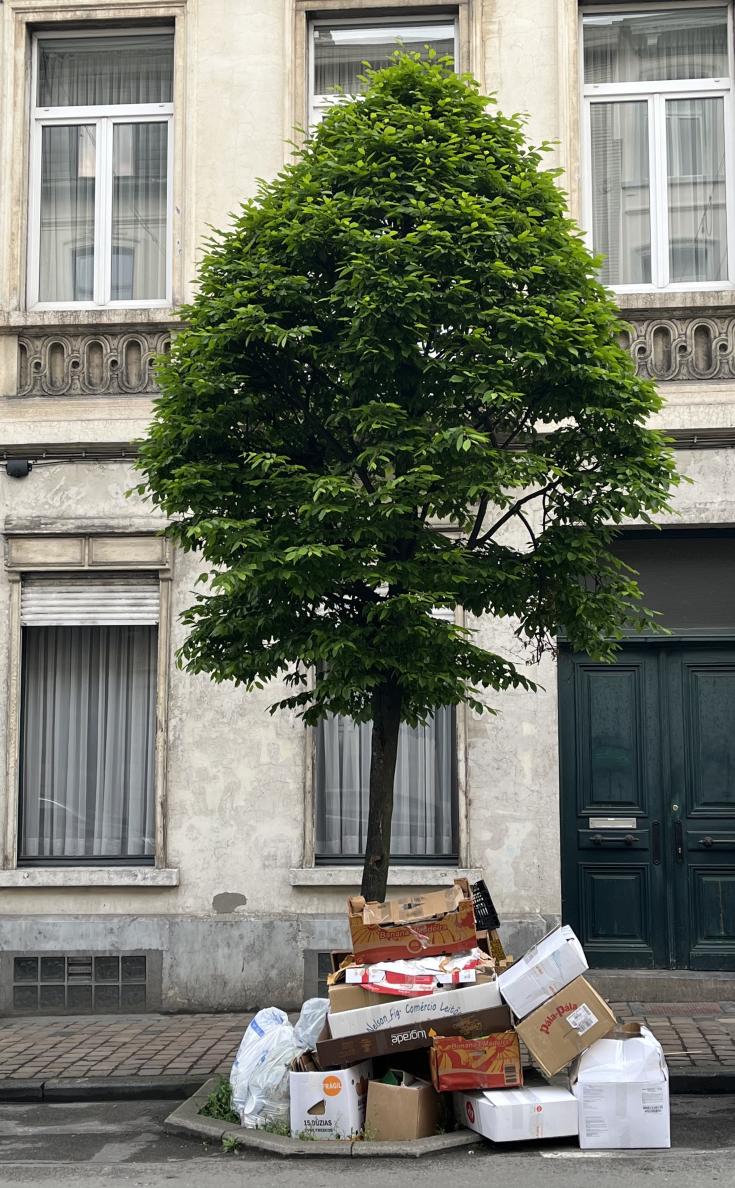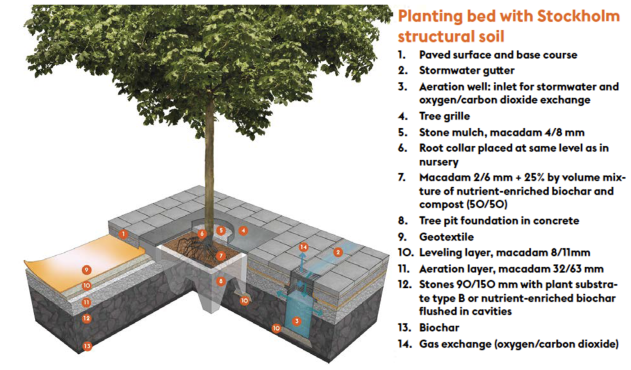Planting trees the right way

Tree planting is widely regarded as one of the solutions to climate change and carbon offsetting. The European Union has made a pledge to plant three billion trees by 2030 and published a new EU forest strategy. An important aspect is that the methodology of planting and growing needs to be fully respectful of ecological principles. This means that the right tree has to be planted in the right place and for the right purpose. The newly planted trees should be planted not only in forests but also in rural and urban areas.
Trees planted in cities, also called urban forests, have the ability to sequester carbon, provide shade and mitigate flooding. The results of a study from the Institute for Atmospheric and Climate Science, ETH Zurich suggest that larger groups of trees in cities can reduce surface temperature up to 12°C. Urban environments and paved surfaces cause several problems that inhibit proper growth of trees and many trees die before reaching an effective size. Planting methods are therefore crucial in ensuring the longevity and health of urban trees.
Common problems include:
- High inconsistency of water supply, often ranging from shortage to sudden floods.
- Impermeable surface and compressed soil, which limits distribution of water and oxygen in the root system. Suffocation and dying trees are often the result of these constraints.
- The plant beds are often too small for the root system, which reflects in poor development of the tree, and structural changes on the pavement.
When the City of Stockholm’s Traffic Administration made an overall status assessment of street trees in 2001, it showed that two-thirds of all trees in the inner city were dead or dying.
“About 20,000 street trees were dying because the city soils were lacking oxygen, water, and organic matter, plus a surplus of road salt, carbon dioxide, vehicle compaction, utility installation, and maintenance disruption were poisoning the trees.”
To recover existing trees, the city started testing various methods. As a result, a unique approach to urban tree planting has been developed.
Stockholm model
Bjorn Embrén and his team have developed a combination of strategies:
- The use of structured soils, to effectively re-create a more natural environment for urban trees
- To mimic natural hydrological pathways and filtration mechanisms
The use of structured soil creates cavities in the planting bed, which allows gas exchange for the tree roots, as well as providing a stable structure with a bearing capacity, which prevents the planting bed from being compacted.
The Stockholm structural soil consists of 90/150 mm stones with plant substrate in the cavities. 10 to 15 centimeters-thick layers of crushed rock are installed in 15 to 30 centimeters-thick layers. The method requires a specifically designed way of layering stones and substrates. These structured soils consist of gravel (often recycled concrete) mixed with smaller soil amendments such as peat, sand, clay, lava, and, with great success, biochar.
“In some cases, 6-year-old trees planted in structured soils with biochar were five times larger than 30-year-old trees planted with more traditional urban tree planting techniques,” explains Björn Embrén, originator of the Stockholm solution.
The planting bed’s aeration must be well-designed with sufficient drainage and infiltration capacity. Today, where this method is used, trees grow evenly and equally. “When a tree bed is built according to the instructions, the only limiting factor is the amount of water and external chemical influences, such as gas or salt”, shares Embrén.
The success of Stockholm’s use of structural soil and the overall planting of urban trees soon became popular outside of Sweden. The method is being used in cities in the USA, Austria, Spain, Norway, Finland, Switzerland, and France.
“Representatives of cities interested in transferring Stockholm’s good practice usually visit Stockholm, where they receive guided visits to plant beds and ongoing construction works, as well as a lecture about Stockholm's plant beds”, clarifies Embrén.
One of the partners of an Interreg Europe project PERFECT, the Austrian Province of Styria, who was looking for an integrated and cross-departmental approach to planting trees with innovative solutions, decided to use the Stockholm method in two places. These are the Association of Municipal Authorities:
- Ökoregion Kaindorf (ca. 6.000 inhabitants)
- The City of Graz (ca. 280.000 inhabitants)
The Ökoregion Kaindorf is adopting a version of the Stockholm method with a plant bed enriched with bio-charcoal. Using a mix of crushed stone and biochar results in improved porosity, enhanced nutrient supply and increased potential as a CO2 sink.
Both examples, Kaindorf and Graz, show increased cross-departmental collaboration (between the environmental and road infrastructure departments). Thanks to its cost-effectiveness, this method has gained support across sectors.
Due to its integrated approach, the Stockholm Solution provides trees with better-growing conditions, which positively affects stormwater management, infrastructure integration and climate change adaption in cities.
According to Embrén, there is no doubt municipalities should invest in this approach to tree planting. “It is crucial to learn and understand how and why it works. It is a sustainable load-bearing construction that counteracts the growth of carbon dioxide in the atmosphere and will keep delivering environmental benefits for a long time.”
Cherry trees saved by Stokholm solution, Kungsträdgården, Stockholm
Featured good practice
Read about the good practice: applying the Stockholm Solution to enhance Green Infrastructure in Austrian Cities and Towns.

